
We are celebrating 15 years — and counting — of stories that are deeply researched and deeply felt, that build a historical record of what the city has been.
We are celebrating 15 years — and counting — of stories that are deeply researched and deeply felt, that build a historical record of what the city has been.
The fierce and fraught history of New York’s gas system affects its contemporary performance, from the increased risks of explosion to the potent climate-warming methane emissions that escape corroded pipe joints. The labyrinth of gas infrastructure inherited by today’s utilities is the legacy from a time when dozens of independent providers battled for the right to lay pipe across a rapidly expanding New York City. Throughout a century of urban overhaul that saw the introduction of electricity, and the installation of the subway, gas infrastructure increasingly jockeyed for underground space. Then came the shift from manufactured gas to natural gas, and with it the changing composition of gas itself, necessitating a complete overhaul of the gas production and delivery system. In this second installment of a three-part series on New York’s gas infrastructure, Nicholas Pevzner digs up the links between these early iterations of the city’s gas system, and its present, dangerously deteriorated state. But what can a city on the edge of another large scale energy transformation learn from previous moments of gas transition?
A powerful explosion in East Harlem leveled two buildings on 116th Street and killed eight people in 2014. This was a very dramatic example of the explosive power of gas, and yet this was not the first, or even the most recent gas explosion that New York City has witnessed.
Early suspicion about the source of the blast fell on the 120-year-old cast iron pipes below the street, infrastructure that dated back to the first generation of New York City’s gas distribution system. Leaky cast iron pipes were similarly found to be the cause of a 2009 house explosion in Floral Park, Queens, and of a 2007 house explosion in Sunnyside, Queens — every few years gas explosions rock New York, and old pipes are often at fault. Cast iron pipes, with their gradually corroding metal and leaky joints, are a common culprit in the world of underground gas leaks — and New York’s gas system, the second-oldest in America, includes a lot of old cast iron buried underfoot.
Less dramatically, but more pervasively, cast iron gas pipes are also largely responsible for the thousands of small leaks that never reach explosive concentrations, but whose steady, silent seep of methane collectively adds up to a sizeable portion of New York City’s greenhouse gas emissions. Gas utilities, in their focus on the dangerously explosive Grade 1 leaks, have largely let the thousands of smaller leaks continue unabated, the gas bleeding into the soil under city streets.
Today’s infrastructure troubles are directly tied to the very long history of this system in New York. Many streets contain multiple sets of gas pipes in tangles that defy clear logic, and which converge on locations that are no longer clearly marked in the urban form of the city. The hulking gas holder tanks or ornate industrial gasworks buildings that used to stand at the major nodes of the gas infrastructure system have long since been demolished. The confusing underground patterns begin to make sense, though, if we recall that prior to consolidating into New York’s two contemporary gas utilities, there were as many as fifteen competing gas companies in the city — seven in Manhattan alone — each laying their own mains and competing aggressively for customers. Each company dug up the streets, installed miles of pipe, built multiple gas production facilities and gas holders (massive tanks) throughout its service territory, and laid large-diameter transfer mains to connect its major gas holders to one another. On occasion, workers excavated and ripped up the pipes of competing gas companies, or, as legend has it, even battled physically in the streets when competing crews ran into one another on the job. The pipe networks we find underfoot today are the physical manifestations of long-buried rivalries from New York’s infrastructural adolescence.
Historically those mains did not carry natural gas from faraway natural gas fields, but rather “manufactured gas” produced from coal right in the city. Manufactured Gas Plants (MGPs) run by the various gaslight companies experimented with producing a flammable gas from bituminous coal, from coke, and from oil, eventually settling on a coal gasification process. Coal gasification entailed combining crushed coal with steam at pressure; the gasworks produced smoke and horrifically noxious smells from materials (hydrogen sulfide, ammonia, and lime) used during the process of gas lime purification that, caused much complaining by neighbors. Manufactured Gas Plants were often located riverside, to allow coal shipments to be received by boat and ash to be taken away; the rivers often became the repository of coal tar, oils, and other “gas-house wastes,” the toxic impacts of which still remain.
Today, we think of gas as primarily providing heat for cooking and heating, and increasingly for centralized electricity generation and microturbine power. But in the mid-1800s, the gas lines under New York City’s streets were principally built to illuminate the night with gaslight.
In 1823, a decade after London became the first city to start illuminating its streets with gas, the New York Gas Light Company began to lay cast iron pipes under New York City’s streets, starting at Canal Street and Broadway. The New York Gas Light Company’s charge was to provide gas for lighting the houses and public streets of Manhattan, from the Battery up to Grand Street and Canal — an area that encompassed almost the entirety of the city at the time.
Ten years later, in 1833, a rival company entered the gas lighting business: the Manhattan Gas Light Company’s franchise allowed it to service all of the island north of the Grand Street/Canal Street line. Though the territory was at first largely rural and unpopulated, this service area quickly grew to outpace that of the New York Gas Light Company as the city expanded rapidly northward.
Two other companies eventually entered the scene: the Harlem Gas Light Company started up in 1855 with a service territory including everything north of 79th Street, and three years later the Metropolitan Gas Light Company muscled its way in, establishing a service territory from 34th Street up to 79th Street. For over a decade, this orderly arrangement held, with Manhattan island comfortably divided into four zones by the four big gas light companies.
The truce began to break down in the 1860s and 1870s, as a series of new companies entered the market in quick succession, disrupting the formerly exclusive territories enjoyed by older companies. Increasingly intense competition culminated in an all-out rate war towards the end of the 1870s, with dramatic price cuts on all sides. By 1880, weakened by the competition and facing a new existential threat from electric lighting, Manhattan’s seven gas companies agreed to enter into a price-fixing and pooling agreement that eliminated the aggressive undercutting of rates, set out defined service areas, prohibited the laying of competing pipe systems, and eventually led to the competing firms officially joining together to form the Consolidated Gas Companies of New York.
In the decade following the merger, Consolidated Gas launched into a flurry of infrastructural improvement, upgrading several coal gasification plants, building six massive new gas holders, and streamlining a system of large-diameter transfer mains to efficiently move gas around throughout its territory. In Brooklyn and Queens, a similar wave of acquisitions and consolidations was taking place, driven in part by the pressure of competition, but — as in Manhattan — primarily spurred by the threat from electric lighting.
For over 50 years the gas companies had focused on providing light, but this focus changed after Thomas Edison launched the Edison Electric Light Company in 1878 with the aim of developing an electrical system to power urban street and residential lamps. Gas executives saw the writing on the wall and began to position their product as a heating and cooking fuel instead. Gas was promoted as a clean-burning fuel compared with the smoke and soot caused by burning coal or wood, as well as convenient, requiring no effort to transport it into the home or take out the ash. Starting in 1900, the Consolidated Gas Companies also began to buy up the competing electric companies, including Edison’s. By 1936, with three quarters of the company’s revenue coming from electricity sales and only a quarter from gas, Consolidated Gas finally became Consolidated Edison. But below the corporate dance of consolidation, the mix of infrastructure underfoot grew denser, and more potentially explosive: the rapid expansion of electric power and lighting throughout New York put electric wires next to gas pipes, as well as water and sewer mains, in the busy underground cross-section of the city streets.
At the turn of the 20th century, the underground gas system burst even more dramatically into public view, as tunnels made way for subways to replace elevated transit lines in the city. Gas lines were rerouted prior to excavating the street for subway construction; publications of the time note the sensitive nature of the operation, well aware of the potential for explosion when displacing gas. During the period of subway construction, wrought-iron bypass mains were suspended from scaffolding above the street, as original cast iron mains were turned off — their leak-prone joints would not have fared well with the jostling and movement of street and scaffolds. For a brief period, the normally buried complexity of the gas system was on full display aboveground, with small service mains running alongside street curbs, large transfer mains elevated high overhead, and service lines coming off the mains and into individual buildings. Once the subways were completed, the streets returned to their former state, although in some cases wrought iron joined the family of gas pipe materials underground, where it was found to better resist the train vibrations, which shook loose the caulk in cast iron pipe joints. Unfortunately, wrought iron pipes were no better at resisting the slow work of corrosion and deterioration, and the pervasive leaking that accompanies them.
In 1949, a brand new pipeline was approved to run 1,000 miles from Texas to Manhattan — “from the region of the world’s greatest natural gas reserves to the world’s richest market,” as the pipeline company put it at the time. Despite heavy opposition from the coal interests and railroad companies that stood to lose money if manufactured coal gas production declined, the Transcontinental pipeline’s construction went ahead, eventually arriving at a terminal on West 134th Street, on the eastern bank of the Hudson River. It began supplying gas to the city in 1951.
While it was financial logic that drove the two big New York gas utilities to switch from manufactured gas to natural gas, the switch came with dramatic physical ramifications for the entire system. At a chemical level, manufactured gas had originally consisted of a mixture of hydrogen, carbon monoxide, methane, and hydrocarbons, along with some carbon dioxide, hydrogen sulfide, and nitrogen; later versions of manufactured gas consisted of a mixture of carbon monoxide and hydrogen. Natural gas, on the other hand, is almost pure methane. The difference between the gases was significant enough that appliances built to run on one did not work with the other.
Thus, the simple switch to natural gas kicked off a herculean effort to convert all the appliances in the city; it also made obsolete the entire infrastructure of gas production within the city limits. On the appliance side, Con Edison had 1.4 million customers with an average of two appliances each, while Brooklyn Union had 350,000 customers with a total of two million appliances. The two utilities undertook a massive operation to convert every gas-burning appliance in their service territories, with technicians visiting every customer to retrofit their devices. The labor of the one process was made possible by the death of the other; as Christopher Castaneda describes in his book Invisible Fuel, “Con Edison was able to employ many of the workers at the manufactured gas plants that were being mothballed, and the conversion team grew to 1,100 employees during the final stage of its work, the conversion of Manhattan.” Brooklyn Union did the same for all of its customers in 1952.
On the urban scale, the switch to natural gas precipitated the closure and eventual demolition of most of New York’s manufactured gas plants; today the gas utilities are still dealing with this toxic legacy. Many of the former manufactured gas plants were demolished; some were redeveloped; many sat vacant until new environmental laws in the 1980s, such as Superfund, assigned their owners the responsibility of cleaning up the contaminated sites.
As the inheritors of these sites, New York’s two present-day gas utilities, Con Edison and National Grid, each have a long list of historic Manufactured Gas Plant sites which they are responsible for remediating — each utility has 51 sites throughout New York State, most no longer hosting the above-ground tanks and buildings, but still carrying the coal tars (and up to 10,000 related chemical compounds, including volatile organic compounds such as benzene and styrene) in their soil.
The switch to natural gas also had another effect, accelerating the leak rate in the system: as utilities made the switch, the “dry” chemical composition of natural gas began drying out the seals in the joints of old cast iron pipes. The old cast iron mains were built for manufactured gas, not for the new substance. Even when the pipe segments themselves were in decent shape, the deteriorating seals at all these joints have led to thousands of small persistent leaks through tiny micro-fissures. Today, while individual leaks are invisible to the naked eye, signs of leakage abound in whiffs of the telltale smell of gas throughout the city, and in dead and dying vegetation at leak locations. Locating leaks precisely requires teams armed with super-sensitive specialized methane detectors — like the survey conducted by gas safety expert Bob Ackley with research professor Bryce Payne in 2013, and again with a larger academic team from Stanford, Duke, Boston University, and Ohio State in 2015 — or else a physical probing of the soil with a lower-tech device available to most gas utility employees.
The switch to natural gas extended New York’s infrastructural tentacles all the way to the gas fields of Texas, then to Louisiana and eventually into the Gulf of Mexico. Expansion of the supply territory continues today, with new pipelines from the Marcellus Shale of Pennsylvania and West Virginia snaking their way towards New York’s distribution network — all with serious environmental implications.
Despite the environmental ills stemming from the age and material legacies of New York’s gas, some inspiration can be taken from the dynamism of the system’s past. The speed and ingenuity with which the gas light companies built out this system should spur the descendants of these same companies to innovate and accelerate their work on the new infrastructural demands of this century: leak detection and repair, safety improvements that will prevent avoidable explosive tragedies, and wholesale pipeline replacement. Furthermore, as we become more aware of the greenhouse gas footprint of our natural gas habit, the history of the conversion of every appliance in New York City over the span of a few short years in the 1950s should inspire advocates of the “electrify everything” movement that large-scale appliance conversion is indeed possible (especially when done by a powerful utility, with the right motivation). An emerging consensus holds that complete decarbonization is the ultimate goal for our energy supply; the question remains what that will mean for our current gas system. How, and how soon, can we achieve that goal through the collective and individual infrastructural decisions that we make each day? Looking at the dynamic history of New York’s gas age, perhaps we can begin to envision a rapid race towards a new post-gas century.
For more on what New York City’s aging gas infrastructure means for both public safety and climate change, as well as a decoding of the sprayed signs that mark where pipes below bear natural gas, turn to the first installment of this three-part series: Gas Flows Below.
The views expressed here are those of the authors only and do not reflect the position of The Architectural League of New York.
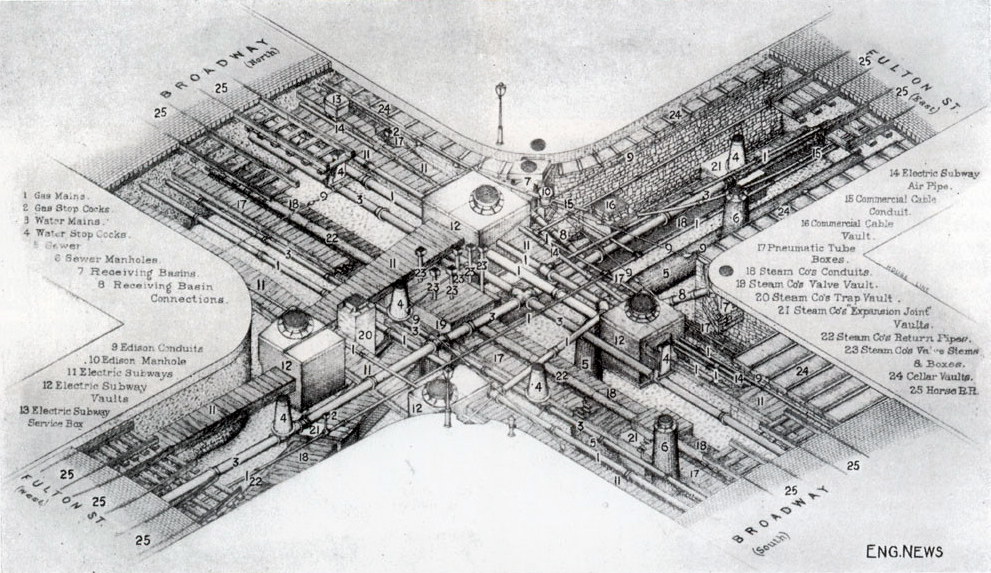
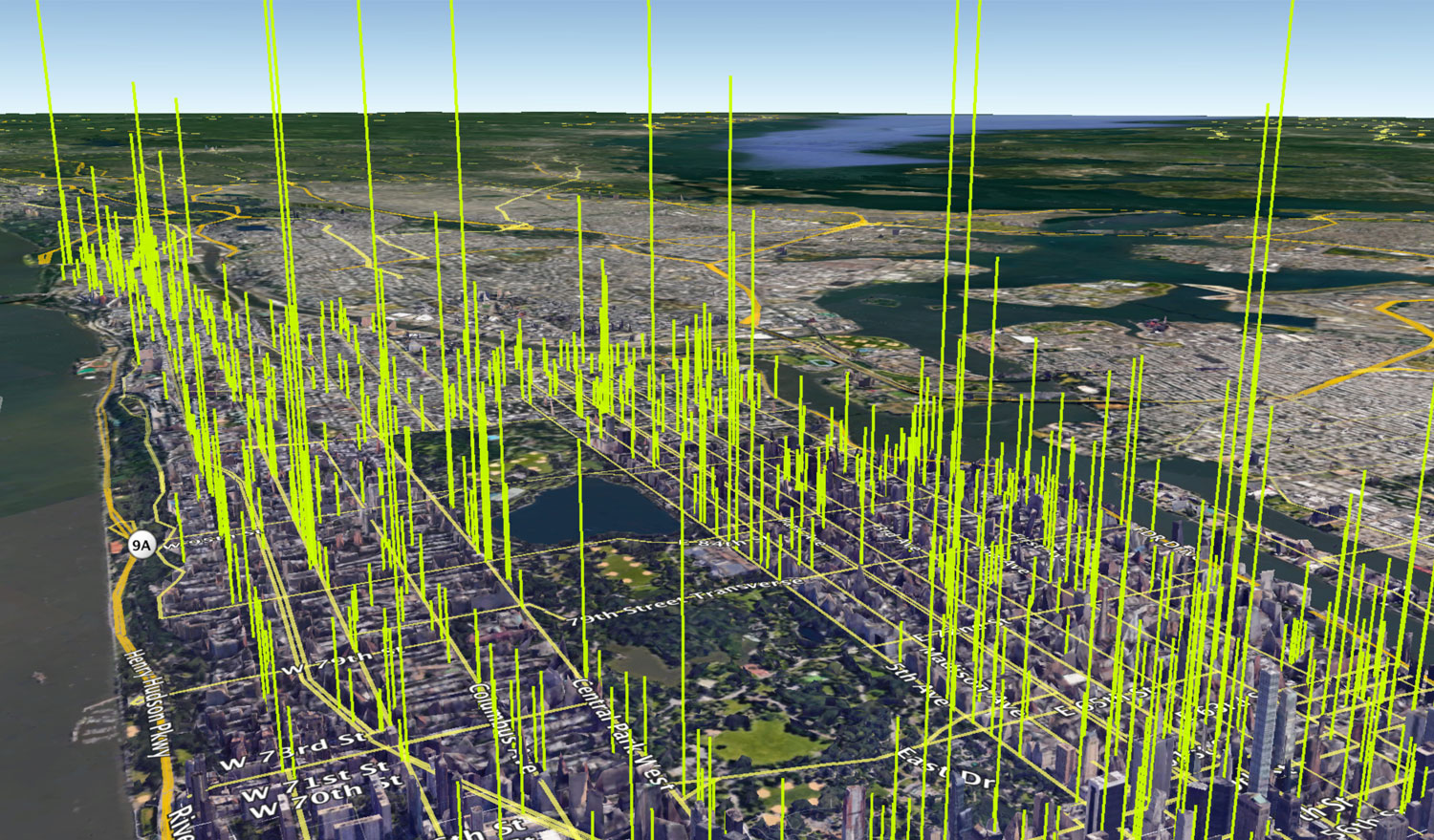


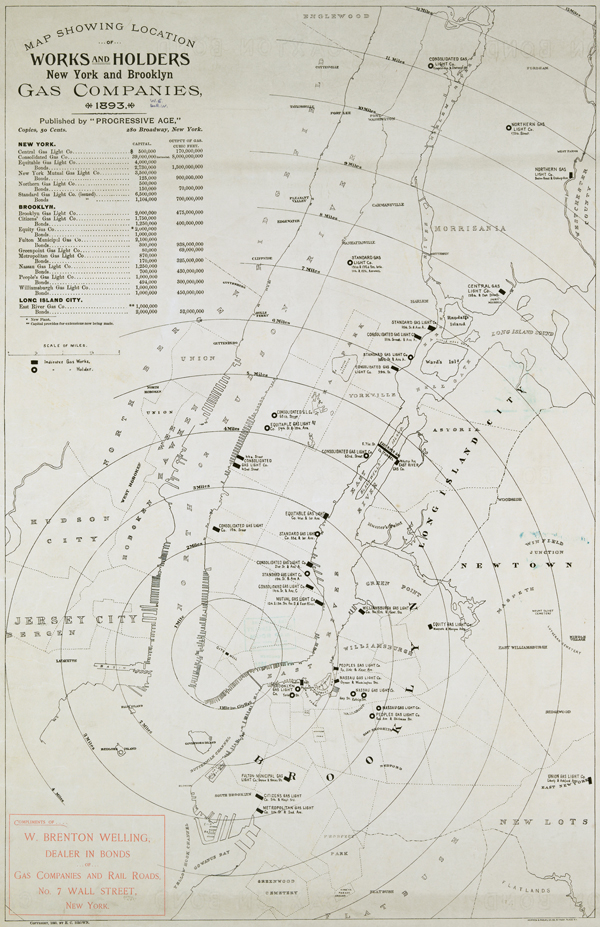

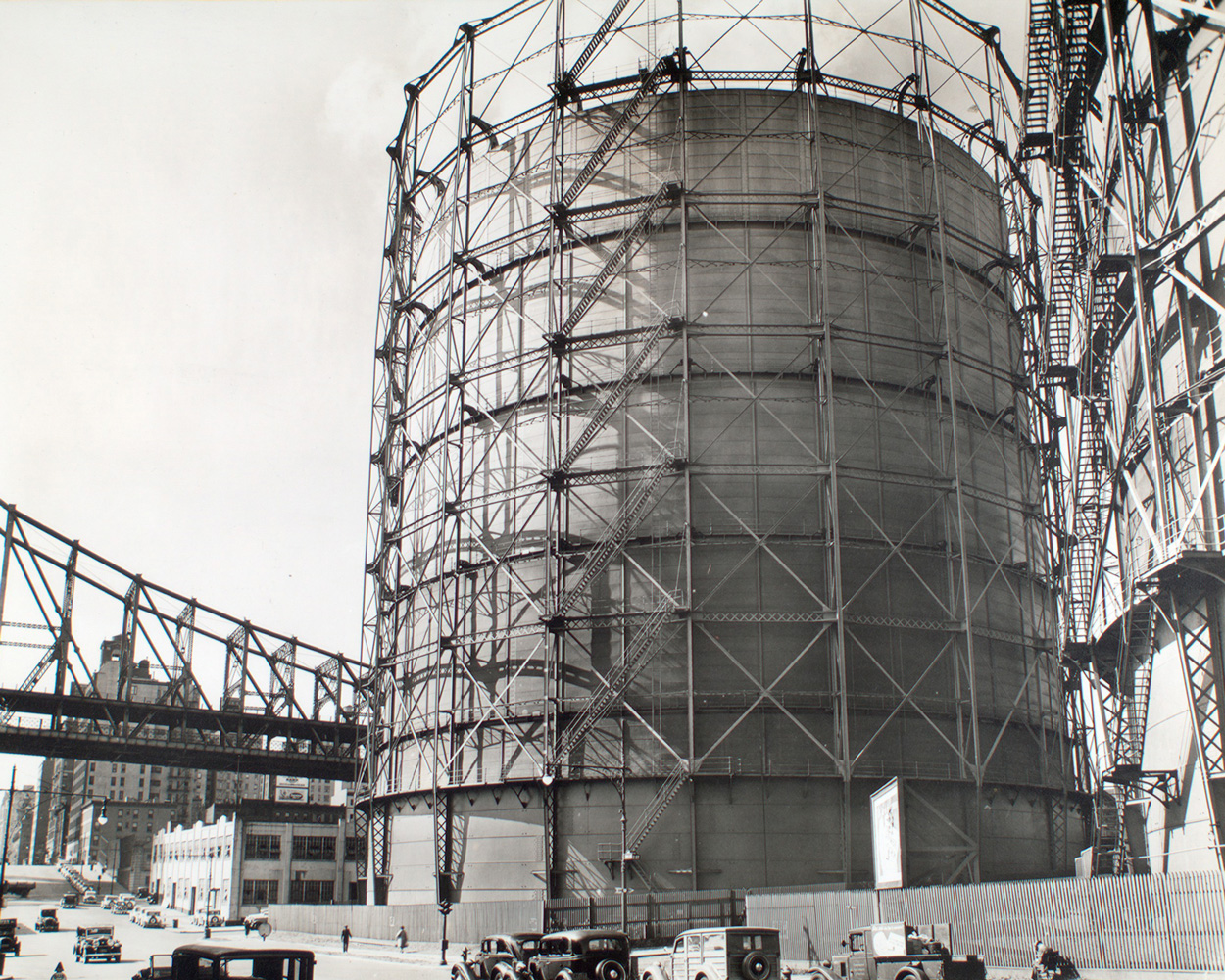
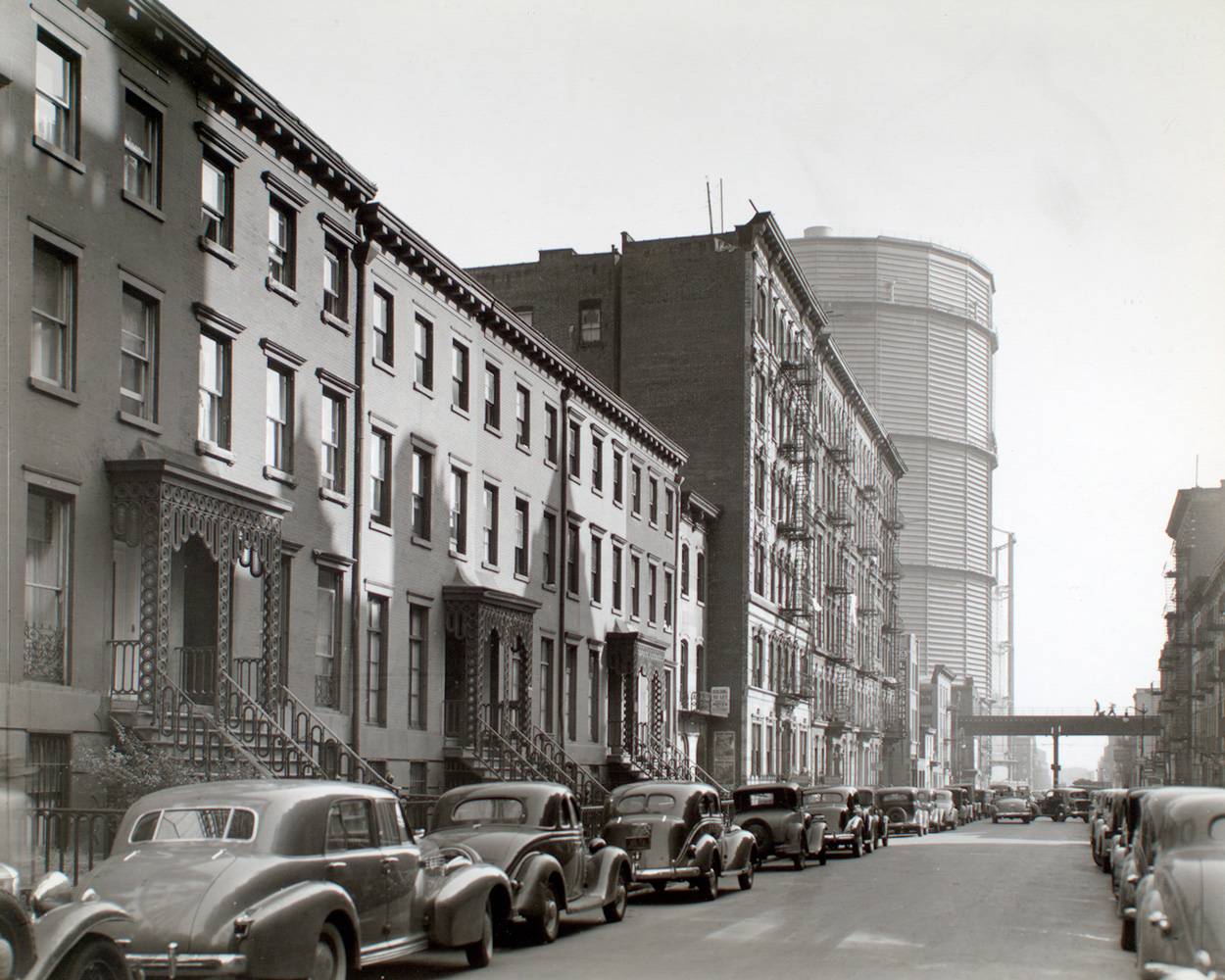
Comments